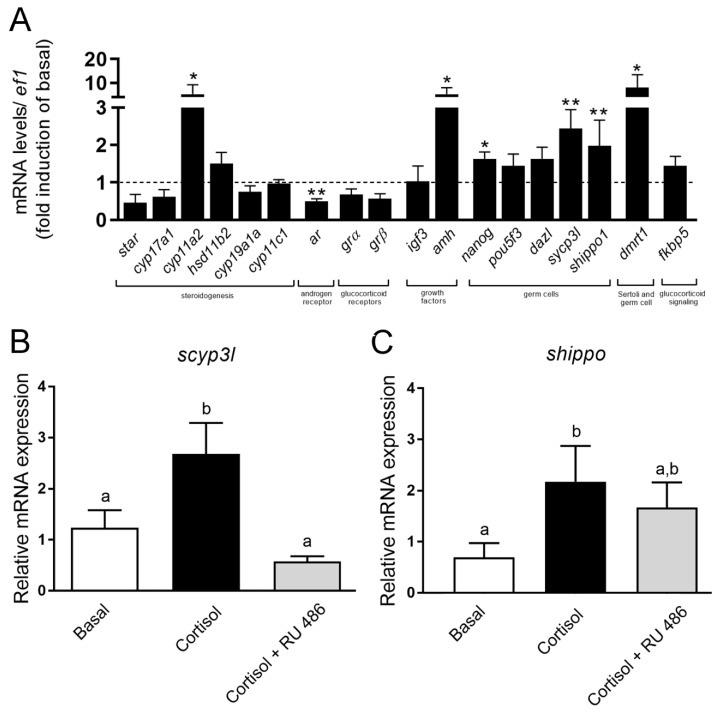Figure 5.
(A) Relative mRNA levels of several selected genes in zebrafish testes incubated for 7 days (long-term exposure) in the presence or absence of 100 ng/mL cortisol. The relative mRNA levels of star (steroidogenic acute regulatory), cyp17a1 (17α-hydroxylase/17,20 lyase/17,20 desmolase), cyp11a2 (cytochrome P450, family 11, subfamily A, polypeptide 2), hsd11b2 (11-beta hydroxysteroid dehydrogenase), cyp19a1a (cytochrome P450, family 19, subfamily A, polypeptide 1a), cyp11c1 (cytochrome P450, family 11, subfamily C, polypeptide 1), ar (androgen receptor), grα (glucocorticoid receptor apha), grβ (glucocorticoid receptor beta), igf3 (insulin-like growth factor 3), amh (anti-Müllerian hormone), nanog (nanog homeobox), pou5f3 (POU domain, class 5, transcription factor 3), dazl (deleted in azoospermia-like), sycp3l (synaptonemal complex protein 3), shippo (outer dense fiber of sperm tails 3B), dmrt1 (doublesex and mab-3 related transcription factor 1), and fkbp5 (FKBP prolyl isomerase 5) were normalized with the ef1 (elongation factor 1α) levels. Bars represent the mean ± SEM fold change (n = 8), relative to the control (basal, 0 ng/mL), which is set at 1 (line). Paired t-test, ** p < 0.01; * p < 0.05. (B,C) Relative mRNA expression of sycp3l and shippo in the zebrafish testes incubated for 7 days with either basal (L-15), cortisol (100 ng/mL), or cortisol (100 ng/mL) + RU 486 (1 µg/mL). Expression levels of sycp3l and shippo were normalized with ef1. Bars represent the mean ± SEM (n = 8 per treatment). ANOVA followed by Student–Newman–Keuls; different letters indicate significant differences (p < 0.05) between treatment conditions.

